Monitoring delegate access in Outlook helps keep track of the activities performed by delegates who have been allowed access to the concerned mailbox. Delegates can help manage emails, appointments, and other aspects, like meeting scheduling, etc., on behalf of the owner. This post will share how you can monitor delegate access in Outlook.
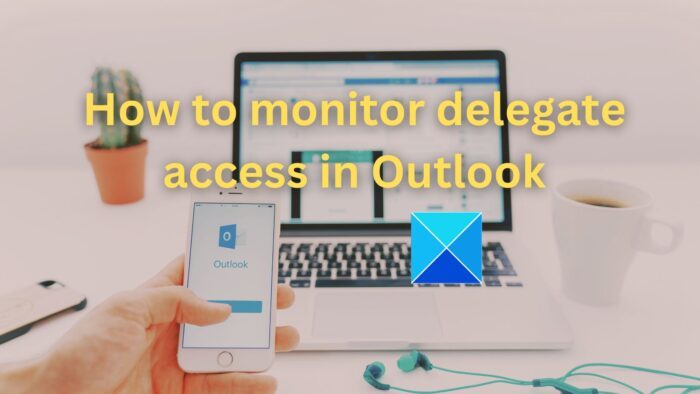
How to monitor delegate access in Outlook
Delegation options are optimally utilized in professional settings where individuals, as well as teams, collaborate to manage schedules and emails. The mailbox owner, while granting the delegation, can set the level of access to apply to the delegates.
- Access Levels and Applicable Folders
- Check and Modify Mailbox Permissions
Because this article is about monitoring delegate access in Outlook, we assume that delegate access has already been granted to a user and, hence, discuss the procedure of monitoring and/or changing the same.
1] Access levels and Applicable folders
An integral part of monitoring delegate access involves reviewing or modifying permissions for the mailbox delegated. Three distinct categories of privileges or permissions levels can be granted for delegation, as mentioned below:
- Reviewer: Only read access to the items is granted to delegates
- Author: Composing new items along with read access. For example, a delegate with Author permission can create meeting requests and tasks directly in the Task and Calendar folder of the owner and send the same on their behalf.
- Editor: With Editor access, the concerned delegate can do all the tasks that an Author can do and can additionally modify and delete items as well.
- None: No access granted.
The said permissions levels can be granted to the Outlook folders such as Calendar, Tasks, Inbox, Contacts, and Notes.
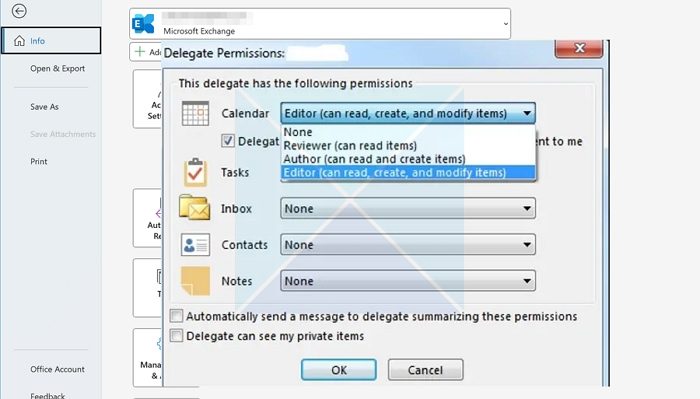
Note: By default, when a delegate is added, are granted Editor permission to the Calendar and Tasks folder, which can be changed by the owner if need be. As and when a delegate responds to a meeting on behalf of the owner, the same gets added automatically to the Owner’s calendar.
2] Check and Modify Mailbox Permissions
The below-mentioned steps provide a detailed description that you can follow to audit and change permissions for delegates in Outlook:
Modifying permissions in Outlook
To modify the permissions for an existing delegate, the Permissions button can be clicked after selecting the name of the concerned delegate. The below-mentioned steps explain the details of managing permissions for a delegate:
- Click on the File Tab and select the Account Settings
- Under Account Settings select Delegate Access
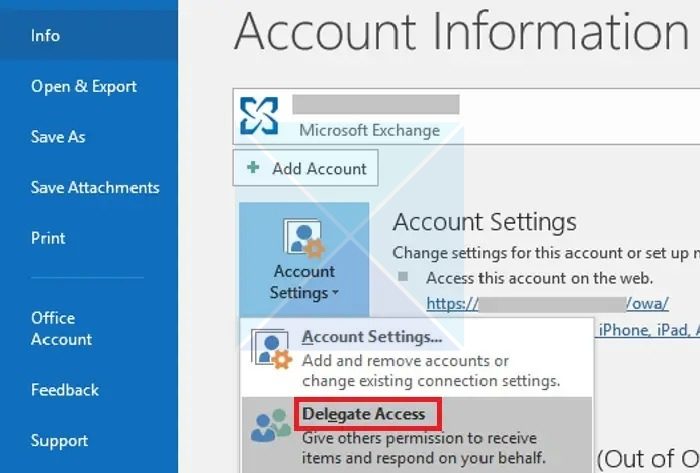
- In the Delegate Access dialogue box, select the delegate name for whom the permissions need to be reviewed and click on Permissions to open the Delegate Permissions dialogue box.

- In the following window, click on the drop-down list beside each item like Calendar, Inbox, etc. The level of access can be reviewed or modified.

- If the delegate should be granted access to receive copies of the meeting requests sent to the mailbox owner, selecting the check box beside Delegate receives copies of meeting-related messages sent to me, should allow the same.
Note: This option comes in handy when the delegate can only work with meeting requests and responses and need not access other items like Inbox, Contacts, or Notes. In such cases, meeting requests and responses will go to the delegate’s inbox directly.
- If the mailbox owner wants the delegate to be notified as and when the permissions are changed, selecting the checkbox beside the Automatically send a message to delegate summarizing these permissions option should ensure the same.
Configuring mail privacy options
Mail Privacy configuration can be another when it comes to monitoring delegate permissions. If the mailbox owner marks a mail as Private, it cannot be viewed or accessed by the delegate. The below-mentioned steps can be followed to mark emails as Private:
- Click on New Email to compose a fresh mail.
- Click on the arrow in the Tags section to open the Properties window.
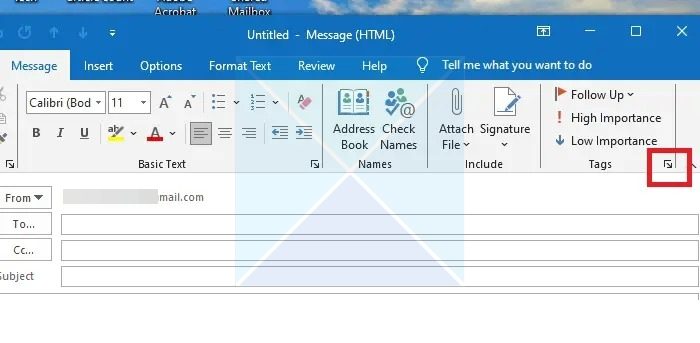
- Click on the drop-down list beside the Sensitivity option and select Private from the list.
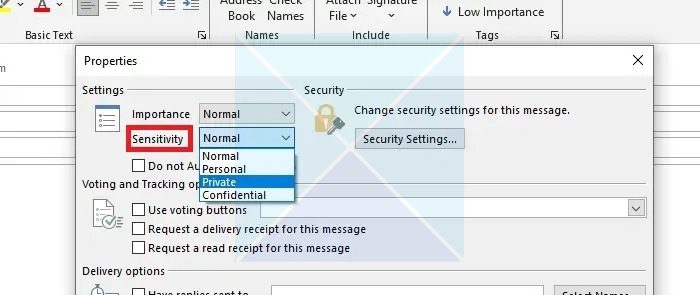
In Outlook, items marked as Private by the mailbox owner aren’t visible to those who have read access. If they need to be granted view access to the same, Delegates can see my private items option can be checked. This setting, however, affects all folders (Inbox, Calendar, Tasks, Notes, and Contacts). Private access cannot be granted to specific folders in any version of Outlook.
Removing access delegation
If the owner wants to remove a particular delegate’s access, the same can be done by following the below-mentioned steps:
- Click on the File Tab and select the Account Settings
- Under Account Settings, select Delegate Access.
- Select the name of the delegate to be removed and click on Remove to remove the delegation access.
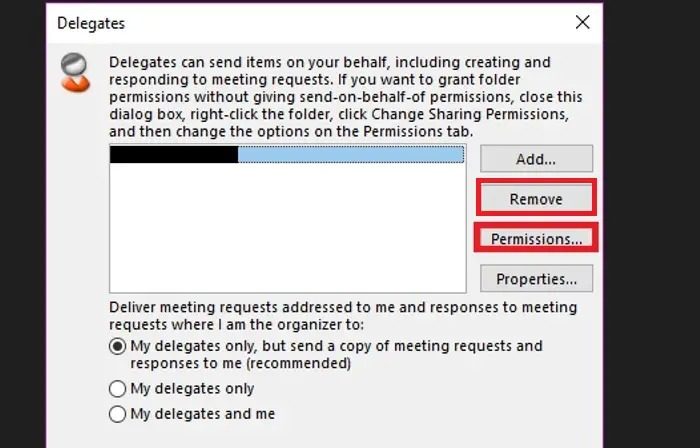
Conclusion
To conclude, delegate access monitoring can be considered a crucial step in maintaining privacy and security. Setting up appropriate permission levels and reviewing the same periodically can help protect sensitive data from unauthorized access at a personal and organizational level.
How do you detect who granted full access permissions to another users mailbox?
To identify who gave full access permissions to another user in Exchange, enable auditing and use PowerShell cmdlets like Set-AdminAuditLogConfig and Search-AdminAuditLog. You can also check the administrator audit log in the Exchange Admin Center. These steps will help you find out who made changes and when to ensure accountability and transparency.
How many delegates can you have in Outlook?
Limit delegates to one or two people. Don’t configure a manager and delegate as delegates for each other. To work as a delegate, get permission from another Office 365 user. Check with your IT department to configure delegate access properly.
Leave a Reply